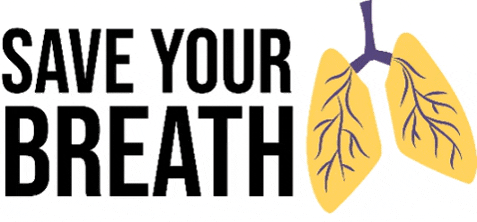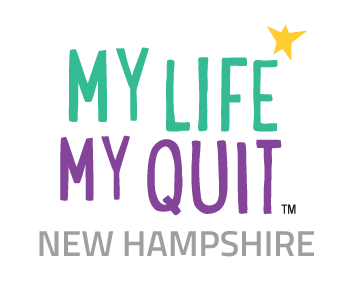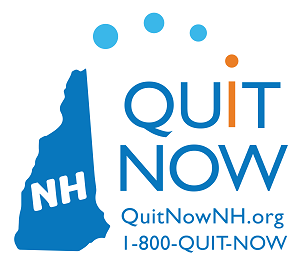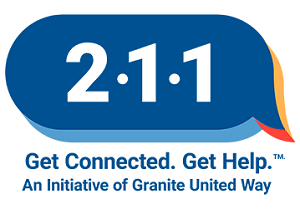Tobacco and Vaping Facts
Tobacco Use and Vaping in New Hampshire

Historically cigarette smoking has been the leading cause of preventable diseases—responsible for more than 480,000 deaths per year in the United States (US). But studies show more youth are using e-cigarettes (electronic nicotine delivery systems or ENDS) or vaping nicotine instead of smoking. Because most adults started smoking when they were adolescents, it is important to prevent the use of any type of nicotine early.1 Most e-cigarettes contain nicotine, which is highly addictive and can harm adolescent brain development, which continues into the early- to mid-20s. E-cigarettes can contain other harmful substances besides nicotine as well.2
Two long-standing national surveys find youth vaping has increased dramatically in recent years, while cigarette smoking has decreased. The Youth Risk Behavior Survey (YRBS) reports youth cigarette smoking has been steadily declining (6.0% of high school youth were currently smoking in 2019 ) while the vaping of nicotine has increased. The Monitoring the Future (MTF) study reports that nicotine vaping was the most commonly used substance among youth aside from alcohol. Nearly one-third reported vaping nicotine.3 Surprisingly there was a significant decline in vaping in 2021, which is consistent with a decline in the reported use of most forms of drugs during the pandemic.4
New Hampshire (NH) has seen similar trends:
- Overall NH youth either smoke cigarettes or vape nicotine at about the same rate or slightly higher as their national peers (34.6%).5
- The percentage of high school students who currently smoke cigarettes (any, frequently, and daily) has declined between 1993 and 2019.
- Between 2017 – 2019 more students reported using an electronic vapor product, increasing from 41.1% in 2017 to 49.8% in 2019.
Nicotine gummies and other flavored non-tobacco products (that look like candy) are new products to keep your eye on. These products contain high levels of nicotine, which is addictive and in high doses can be poisonous. Nicotine gummies reportedly contain 1 milligram of nicotine per candy, equal to the amount of nicotine the body receives from smoking one cigarette. Eating several gummies could cause nicotine poisoning in a young child. In fact, a study of youth in California found these types of gummies and other similar products were the second most widely used nicotine product. Youth tobacco surveys are not tracking the use of nicotine gummies and other non-tobacco products because they are so new.


In addition to statewide evidence-based prevention strategies to prevent tobacco use, there are everyday things that we can all do to help youth avoid using any form of tobacco, including vaping.
Talk with the young people in your life about tobacco

Educate yourself on what tobacco use looks like for youth today. Understand how and why young people are introduced to smoking; through the media, advertisements, peers, and other areas of their life.
Understand what electronic vaping devices look like, smells like and why they are attractive to youth. Learn more about how Big Tobacco targets young people and what resources there are to help them quit.
- Save Your Breath NH – Prevention and education for youth
- My Life, My Quit – Treatment options for youth
Set an example. Consider quitting if you smoke vape, or use other tobacco products. If quitting is not an option for you, then explain to the youth in your life what you wish you knew about smoking or tobacco product use before you started.
“If I had known how difficult it would be to quit smoking, I wouldn’t have started.”
“There was less information about smoking when I was young, and I wish someone had told me some of the dangers then, like I am telling you now.”
If you are considering using an electronic vaping device to quit, consider explaining to the youth in your life that electronic vaping devices can be a tool to quit or reduce the harm of smoking, but they are NOT safe. Make it clear that while these devices MAY BE considered harm reduction for ADULTS, they are NOT harmless
Seek expert help when needed. If you are worried that a youth in your life is smoking or vaping, talk to them about it first. Come to the conversation with an open mind and be willing to listen and learn. Encourage youth to talk with a healthcare provider about quitting. Talk to youth about free confidential resources that are available when they are ready to quit such as My Life, My Quit.
It is never too early or too late to show those in your life that you CARE about their use of tobacco and other e-cigarette products.
In the short-term smoking, tobacco, or the use of other products with nicotine can cause.6
- increased blood pressure
- increased heart rate
- faster breathing
While these can cause an adrenaline rush in the short-term that can be pleasurable, the brain quickly begins to crave the effects of nicotine.
With long-term use7:
When youth start smoking early in life, they are at increased risk of misusing other substances or developing mental health issues later in life.8
- Loss of taste from damage to taste buds
- Loss of smell from nose damage
- Loss of sight from cataracts which could damage the eyes and cause blurry vision
Withdrawal from tobacco includes9:
- irritability
- problems paying attention
- trouble sleeping
- increased appetite
- powerful cravings for tobacco
If you or someone you know is ready to quit, check out QuitNow-NH (1-800-QUIT-NOW) for adults or My Life, My Quit for youth. Also, consider using one of the U.S. Food and Drug Administration’s approved quit medications. These products are intended to help you quit smoking by reducing the urge, and work best with behavioral counseling. Some products contain nicotine called NRT (Nicotine Replacement Therapy) as an active ingredient and others do not. There are over-the-counter options like skin patches, lozenges, and gum, as well as other prescription medicines. You may be eligible for free NRT options through QuitNowNH.org. While NRT is not approved for those under 18 years of age, the American Academy of Pediatrics recommends that pediatricians consider off-label NRT for youth who are moderately or severely addicted to nicotine and motivated to quit.
The FDA has not approved e-cigarettes as a quit smoking aid, and more research is needed on whether e-cigarettes are effective for quitting smoking and to better understand the health effects of e-cigarettes. Watch this video to learn what local experts have to say about supporting young people to quit vaping.
QuitNow-NH is inviting NH residents to write a letter to themselves with their reasons to quit tobacco or nicotine use through the DearMe-NH campaign. The campaign asks “If you wrote a letter to yourself about quitting, what would you say?” While every letter is incredibly personal, each has the power to inspire others..This campaign is open to all adults (18+) in New Hampshire who currently use or formerly have used tobacco products (including smoking, vaping, and chewing tobacco). Stories can be submitted at DearMeNH.org via letter, video, or audio recording.
Universal Screening of of substance use and mental health well-being
 Screening, Brief Intervention and Referral to Treatment (SBIRT) is an evidence-based practice used to identify, reduce, and prevent abuse and dependence on alcohol, tobacco, and other substances. SBIRT is part of a comprehensive prevention program that schools can implement to reduce and prevent substance misuse. By supporting SBIRT in your schools and communities, you can help your young people make healthy choices. SBIRT provides early identification, referral, and support services. To learn more about SBIRT, visit SBIRTNH.org
Screening, Brief Intervention and Referral to Treatment (SBIRT) is an evidence-based practice used to identify, reduce, and prevent abuse and dependence on alcohol, tobacco, and other substances. SBIRT is part of a comprehensive prevention program that schools can implement to reduce and prevent substance misuse. By supporting SBIRT in your schools and communities, you can help your young people make healthy choices. SBIRT provides early identification, referral, and support services. To learn more about SBIRT, visit SBIRTNH.org

Spotlight Factsheet: Understanding Youth Vaping in New Hampshire – Facts for Parents and Caregivers
Youth vaping (or e-cigarette use) which leads to nicotine dependence is a public health crisis. Parents, caregivers and schools are overwhelmed with how to respond. This factsheet explains why vaping is so popular among youth and how you can make a difference.

Tobacco use is an obstacle for people living with behavioral health issues (mental health and substance use disorders). When mental health centers and their staff make tobacco treatment part of their routine clinical approach by offering counseling and medications, they increase a patient’s chances for quitting. This factsheet explains why it is important to address nicotine dependence during treatment.

A resource to educate youth on the harms of vaping and prevent starting, and a connection to the State’s quit vape resources for teens.

A youth-focused resource for NH teens to get information and quit-counseling for their vaping or tobacco use. Teens can also call or text “Start My Quit” to 36072 or visit the site to chat with a Coach.

Free tobacco and nicotine quit-counseling and support for any New Hampshire adult. Calling 1-800-QUIT-NOW from any state connects you to your state’s quitline.

A comprehensive source of information about local resources and services to help you take care of yourself and your loved ones.

A provider-focused resource for helping residents of NH with tobacco cessation.

A national, youth-focused resource on industry manipulation, activism, and offers the This Is Quitting program for quitting tobacco and its harmful effects.

Breathe NH focuses on critical issues related to lung health, such as tobacco use, COPD (chronic obstructive pulmonary disease), asthma, air quality, and lung cancer. They provide educational programs, advocate for public health, and support scientific research to prevent, eliminate, and treat lung disease.
Additional Educational Resources
The Real Cost of Vaping – A resource from Scholastic and the FDA which provides information and data about vaping and marketing messages targeting youth for educators to implement in grades 6 – 12.
American Lung Association – An educator focused toolkit that includes information on how to create a vape free environment in schools.
CVS Be Vape Free – An elementary and middle school, educator-focused resource that presents evidence-based nicotine vaping prevention programs.
CATCH My Breath – A curriculum for U.S. middle and high schools on coaching youth to support a peer lead anti vaping movement in their communities.
2U.S. Department of Health & Human Services, Centers for Disease Control and Prevention. Quick Facts on the Risks of E-cigarettes for Kids, Teens, and Young Adults.
3The Monitoring the Future study, the University of Michigan. 2021 Overview Report.
4The Monitoring the Future study, the University of Michigan. 2021 Overview Report.
6https://teens.drugabuse.gov/what-happens-your-body-when-you-use-tobacco-and-nicotine
7https://teens.drugabuse.gov/what-happens-your-body-when-you-use-tobacco-and-nicotine
8El-Guebaly, N., Cathcart, J., Currie, S., et al. (2002). Smoking cessation approaches for persons with mental illness or addictive disorders. Psychiatric Services, 53 (9), 1166-1170.
9https://nida.nih.gov/publications/drugfacts/cigarettes-other-tobacco-products

